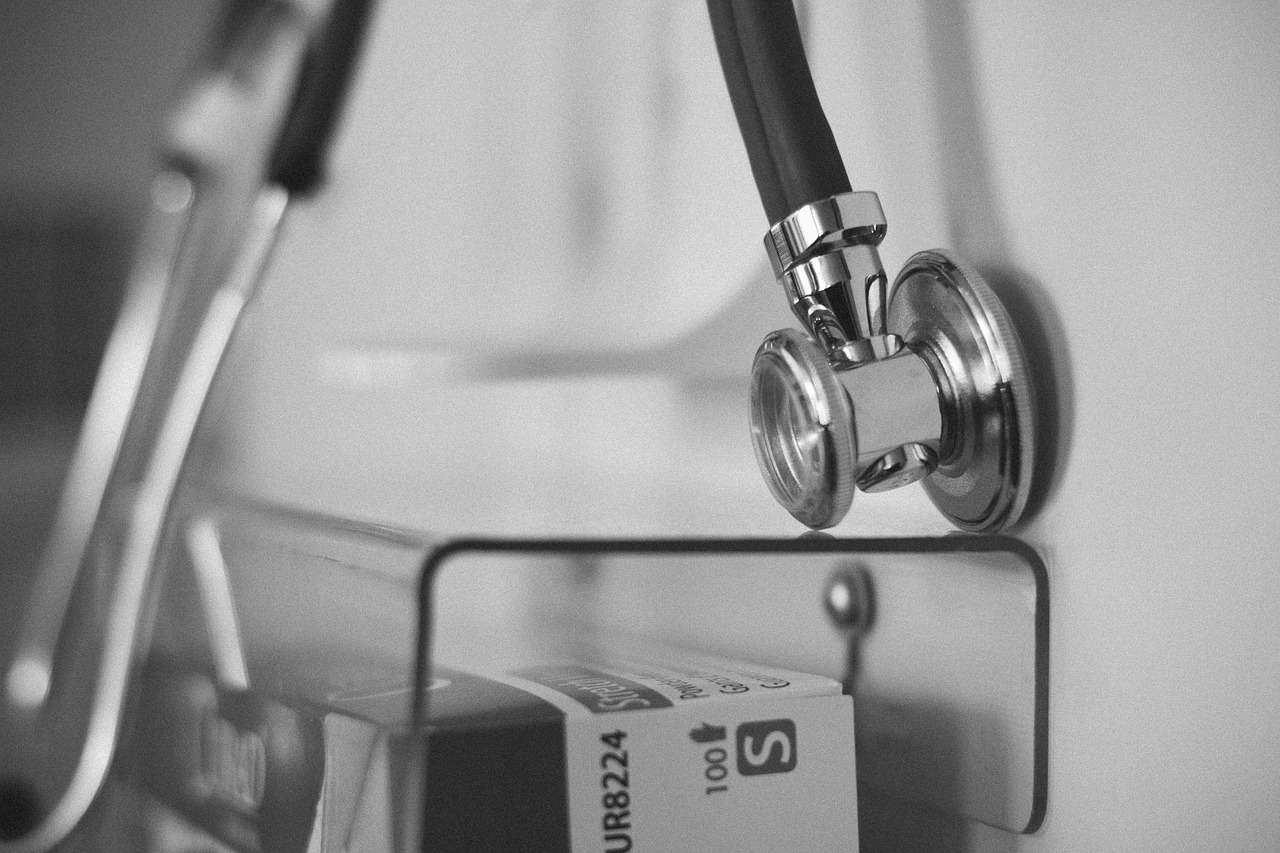Auscultation is a fundamental skill in the medical field. It’s not just about listening; it’s about understanding the symphony of sounds that our bodies produce. From heartbeats to lung sounds, these auditory clues can reveal critical information about a patient’s health. However, traditional methods of auscultation have their limitations. Enter Fonendi—a revolutionary diagnostic tool that’s changing the way healthcare professionals approach this age-old practice.
Imagine having a device that amplifies and transforms those subtle bodily sounds into clear, actionable insights. With Fonendi, practitioners are now equipped with advanced technology designed to enhance diagnosis and improve patient care. As we dive deeper into the world of auscultation tools, let’s explore how Fonendi stands out in this evolving landscape and what it means for both healthcare providers and patients alike.
Evolution of Auscultation Tools
The history of auscultation tools is fascinating. It began with the simple act of listening to heart and lung sounds directly, often using one’s ear on the patient’s chest. This technique, known as direct auscultation, dates back centuries.
Then came René Laennec in 1816. He developed the first stethoscope—a hollow wooden tube that revolutionized how physicians listened to internal sounds. This innovation marked a significant shift in medical practices.
As time progressed, technology advanced further. The classic mechanical stethoscope emerged next, featuring dual-sided bell and diaphragm designs for varying sound frequencies. Audiovisual enhancements followed in modern times with electronic stethoscopes that amplify heartbeats and lung function.
Today’s landscape introduces digital solutions like Fonendi—tools integrating software analytics and data visualization into traditional practices. Such evolution not only enhances diagnostic capabilities but also transforms healthcare delivery itself.
What is Fonendi and How does it Work?
Fonendi is a cutting-edge diagnostic tool designed to enhance the practice of auscultation. Unlike traditional stethoscopes, Fonendi integrates advanced technology to provide healthcare professionals with clear and detailed audio recordings of heartbeats and lung sounds.
At its core, Fonendi operates by using high-quality microphones that capture sound frequencies with precision. These sounds are then transmitted via Bluetooth or wired connections to smartphones or tablets for analysis. This digital approach allows practitioners to visualize and share auscultation data easily.
With interactive features, users can annotate findings in real-time. The app also houses a library of reference sounds, enabling quick comparisons against normal and abnormal patterns. This makes it an invaluable resource for training as well as diagnostics.
Fonendi simplifies the process while improving accuracy in patient assessments. It represents a significant leap forward in how clinicians interpret vital signs through enhanced auditory capabilities.
Advantages of Fonendi over Traditional Stethoscopes
Fonendi revolutionizes the way healthcare professionals conduct auscultation. Unlike traditional stethoscopes, Fonendi utilizes advanced digital technology to enhance sound quality and clarity. This means that subtle heartbeats or breath sounds, often missed by standard tools, can be easily detected.
Another significant advantage is its ability to record and store audio data. This feature allows clinicians to review patient sounds over time, facilitating better diagnosis and treatment plans. By having access to past recordings, a more informed decision-making process emerges.
Fonendi also integrates seamlessly with mobile devices for easy sharing among healthcare teams. This connectivity fosters collaboration in patient care like never before.
Moreover, it has user-friendly interfaces designed for quick learning curves. Even those new to medical practice find it intuitive and efficient in real-world applications. With these unique features, Fonendi stands out as an essential tool for modern medicine.
Clinical Applications of Fonendi
Fonendi is making waves across various clinical settings. Its ability to provide clear and accurate sounds enhances diagnostic precision.
Doctors can use Fonendi in cardiology, helping them identify murmurs or irregular heartbeats with ease. The device captures subtle nuances that traditional methods might miss.
In pulmonology, it allows for detailed assessments of lung sounds. This aids in diagnosing conditions like asthma or pneumonia more effectively.
Emergency departments also benefit significantly from its rapid data analysis. Clinicians can make swift decisions based on real-time auscultation results.
Moreover, Fonendi’s portability ensures it’s available wherever needed—be it at bedside or during patient transfers.
Training programs are integrating the device into their curriculums as well, preparing future healthcare professionals to utilize advanced technology seamlessly in their practice.
User Reviews and Feedback
User reviews of Fonendi paint a vivid picture of its impact in clinical settings. Many healthcare professionals are impressed by the clarity and precision it offers compared to traditional stethoscopes.
Nurses appreciate how easy it is to integrate Fonendi into their daily routines. The lightweight design and user-friendly interface make auscultation seamless, even during busy shifts.
Doctors have noted that the device enhances diagnostic accuracy. They find it especially beneficial for detecting subtle heart murmurs or lung sounds that might otherwise go unnoticed.
Feedback often highlights the app’s real-time analysis feature, which allows practitioners to visualize sound waves. This adds an innovative layer to patient assessments that many find invaluable.
Some users express excitement about learning new skills with this technology, feeling empowered in their practice. Fonendi seems to be fostering a positive shift towards enhanced diagnostics within healthcare environments.
Future Developments and Possibilities
The future of Fonendi is filled with exciting possibilities. As technology advances, we can expect even more sophisticated features that enhance diagnostic accuracy.
Integrating artificial intelligence could transform how health professionals interpret auscultation sounds. Machine learning algorithms may assist in identifying patterns, leading to faster diagnoses and improved patient outcomes.
Additionally, the potential for remote monitoring opens new avenues for telemedicine. Fonendi could allow healthcare providers to assess patients’ respiratory and cardiac conditions from a distance, enhancing access to care, especially in rural or underserved areas.
Collaboration between tech developers and medical experts will drive innovations that expand Fonendi’s capabilities. This partnership has the power to refine user interfaces and increase functionality based on real-world clinical needs.
As research continues, we might see integrations with other diagnostic tools for a more holistic approach to patient assessment. The landscape of healthcare is evolving rapidly; Fonendi stands at the forefront of this transformation.
Conclusion
Auscultation is a cornerstone of clinical examination. It allows healthcare professionals to listen to internal sounds and make critical assessments about a patient’s condition. As technology advances, traditional methods evolve too. Fonendi emerges as an innovative tool in this essential practice.
Fonendi represents a significant leap forward in the evolution of auscultation tools. By integrating digital technology with acoustic capabilities, it enhances the precision and efficiency of sound analysis in various medical contexts.
This device operates using advanced algorithms that filter noises and amplify relevant heart and lung sounds, making them clearer than ever before. Physicians can record these sounds for further evaluation or share them with colleagues for collaborative diagnoses.
Compared to traditional stethoscopes, Fonendi offers distinct advantages such as real-time data analysis, connectivity features, and user-friendly interfaces that simplify complex assessments. These benefits enhance diagnostic accuracy while improving patient engagement during examinations.
Clinical applications are vast—ranging from primary care settings to specialized fields like cardiology or pulmonology. Its versatility makes Fonendi suitable for pediatric patients as well as adults, ensuring comprehensive care across demographics.
User feedback highlights its effectiveness in enhancing diagnostic confidence among practitioners while significantly reducing errors linked to auditory misinterpretations. Many users appreciate how easy it is to integrate into their daily routines without extensive training periods.
As we look ahead, future developments may include even more sophisticated analytics capabilities or integration with artificial intelligence systems designed specifically for predictive health insights based on auscultatory data collected through devices like Fonendi.
The landscape of healthcare continues transforming rapidly thanks to innovations like Fonendi. With improved technology comes enhanced capability for clinicians striving towards excellence in patient care delivery.

